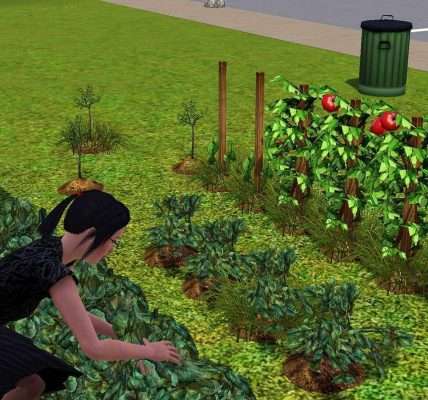Gardening in Colorado presents unique challenges and opportunities. The state’s high altitude, intense sunlight, dry air, and short growing season demand a specialized approach. To achieve a flourishing garden, understanding these environmental factors and adapting your techniques accordingly is essential. Discovering effective gardening tips Colorado residents swear by can dramatically improve your success rate and transform your outdoor space into a vibrant oasis. Mastering these gardening tips Colorado offers ensures your efforts yield beautiful results.
Understanding Colorado’s Unique Gardening Challenges
Colorado’s climate can be unforgiving, but with the right knowledge, you can overcome its hurdles. Let’s delve into the specifics:
High Altitude: Lower oxygen levels can affect plant growth.
Intense Sunlight: Plants are susceptible to sunburn and require proper shading.
Dry Air: Water conservation is crucial to prevent dehydration.
Short Growing Season: Selecting fast-maturing varieties and extending the season are key.
Soil: Typically alkaline and nutrient poor, requiring amendment.
Essential Gardening Tips for Colorado Success
Here are some actionable strategies to help your garden thrive in Colorado:
Soil Preparation is Key
Colorado soil is often alkaline and lacks essential nutrients. Amend it generously with compost, manure, and other organic matter. Consider a soil test to determine specific nutrient deficiencies and adjust accordingly.
Water Wisely
Water deeply and less frequently to encourage deep root growth. Utilize drip irrigation or soaker hoses to deliver water directly to the roots and minimize water loss through evaporation. Mulch around plants to retain moisture and suppress weeds. Be mindful of local watering restrictions.
Choose the Right Plants
Select plant varieties that are well-suited to Colorado’s climate and growing season. Look for drought-tolerant and cold-hardy options. Consider native plants, which are naturally adapted to the local environment and require less maintenance.
Protect from the Elements
Shield plants from intense sunlight, wind, and frost. Use shade cloth or row covers to protect delicate plants during the hottest part of the day or during unexpected cold snaps. Consider windbreaks to reduce wind damage.
Extend the Growing Season
Start seeds indoors several weeks before the last expected frost. Use cold frames, greenhouses, or row covers to extend the growing season in the spring and fall. Choose fast-maturing varieties that can be harvested before the first frost.
FAQ: Colorado Gardening
Q: When is the best time to plant in Colorado?
A: This depends on your location and the specific plants you’re growing. Generally, wait until after the last expected frost, typically in late May or early June for higher elevations.
Q: How do I deal with alkaline soil?
A: Amend the soil with organic matter, such as compost or peat moss. You can also add sulfur to lower the pH.
Q: What are some good drought-tolerant plants for Colorado?
A: Examples include lavender, sedum, yarrow, and coneflowers.
Q: How can I protect my plants from hail?
A: Use hail netting or row covers to protect plants from hail damage.
Comparative Table: Watering Methods
| Watering Method | Pros | Cons |
|---|---|---|
| Hand Watering | Precise, allows for close monitoring of plants | Time-consuming, can be inefficient, potential for overwatering |
| Sprinkler Systems | Covers large areas, convenient | Water waste, can promote fungal diseases, uneven coverage |
| Drip Irrigation | Efficient, delivers water directly to roots, reduces water waste | Can be more expensive to install, requires maintenance |
By implementing these gardening tips Colorado gardeners have developed over the years, you can significantly increase your chances of success and create a thriving garden that you can enjoy for years to come.
But what about pest control? Are there organic methods effective against Colorado’s common garden pests like aphids and cabbage moths? Should you consider companion planting to deter unwanted insects naturally? Or perhaps beneficial nematodes could be your secret weapon against soil-borne pests?
Beyond the Basics: Advanced Colorado Gardening Techniques
Ready to take your Colorado gardening skills to the next level? Let’s explore some advanced techniques.
Vertical Gardening: Maximizing Space
With limited space, could vertical gardening be the answer? Think trellises for climbing vegetables like beans and cucumbers. Are hanging baskets a viable option for herbs and flowers? Might a living wall add a touch of green to a small patio or balcony?
Xeriscaping: Embracing Drought-Tolerant Landscaping
Considering Colorado’s arid climate, is xeriscaping a smart choice? Are you familiar with the principles of xeriscaping, such as grouping plants with similar water needs? Could you replace your lawn with drought-tolerant groundcovers and native grasses? Have you explored using gravel and rocks as mulch to conserve moisture?
Composting: Recycling Garden Waste
Are you composting your kitchen scraps and yard waste? Do you know how to create a balanced compost pile with the right ratio of green and brown materials? Is a worm bin a feasible option for indoor composting during the winter months? Are you aware of the benefits of using compost to improve soil health and reduce the need for chemical fertilizers?
Seed Saving: Preserving Your Favorite Varieties
Have you ever considered saving seeds from your favorite plants? Do you know how to properly select and dry seeds for storage? Are you aware of the importance of seed saving for preserving genetic diversity and adapting plants to your local environment? Could this eventually lead to even more effective gardening tips Colorado gardeners will be sharing?
So, with these advanced techniques in mind, are you ready to transform your Colorado garden into a sustainable and thriving ecosystem? Could you become a master gardener, sharing your knowledge and experience with others?

